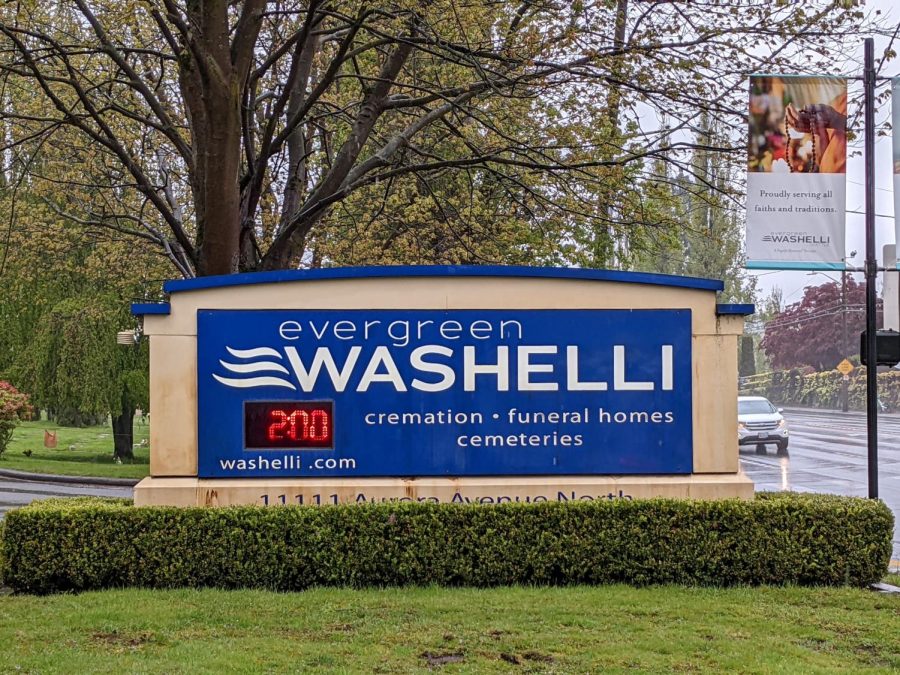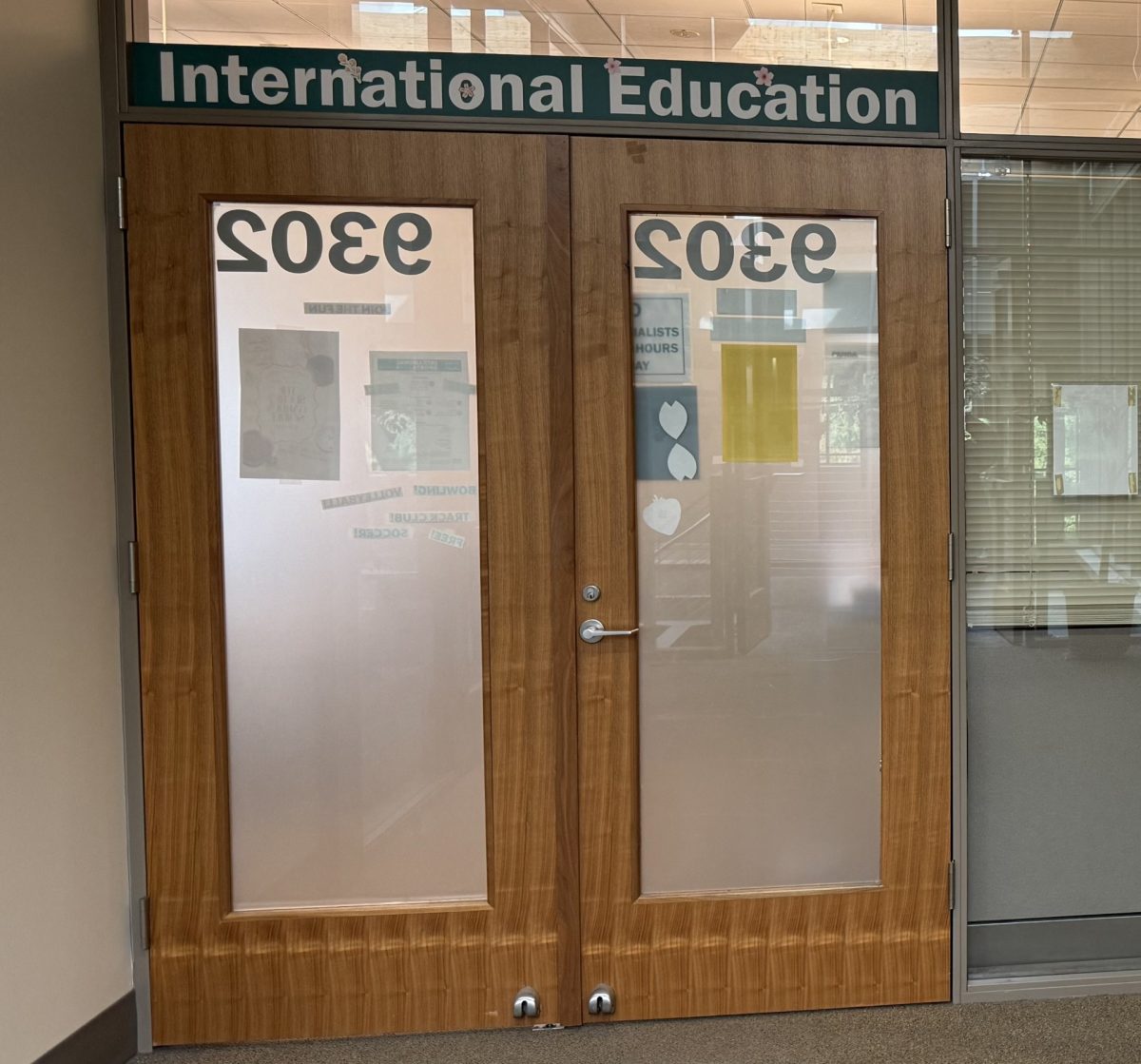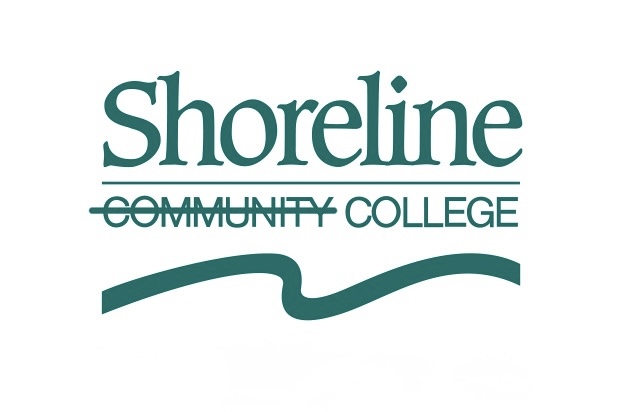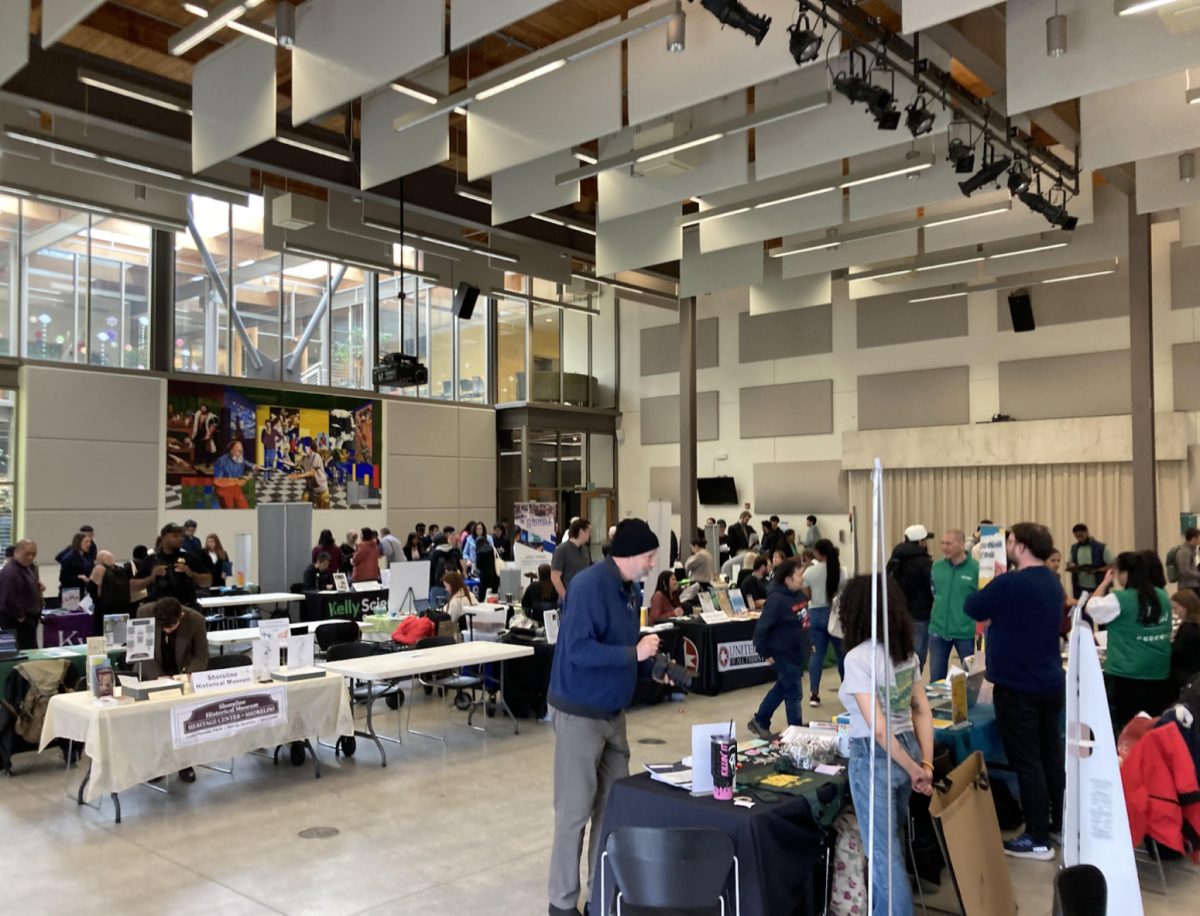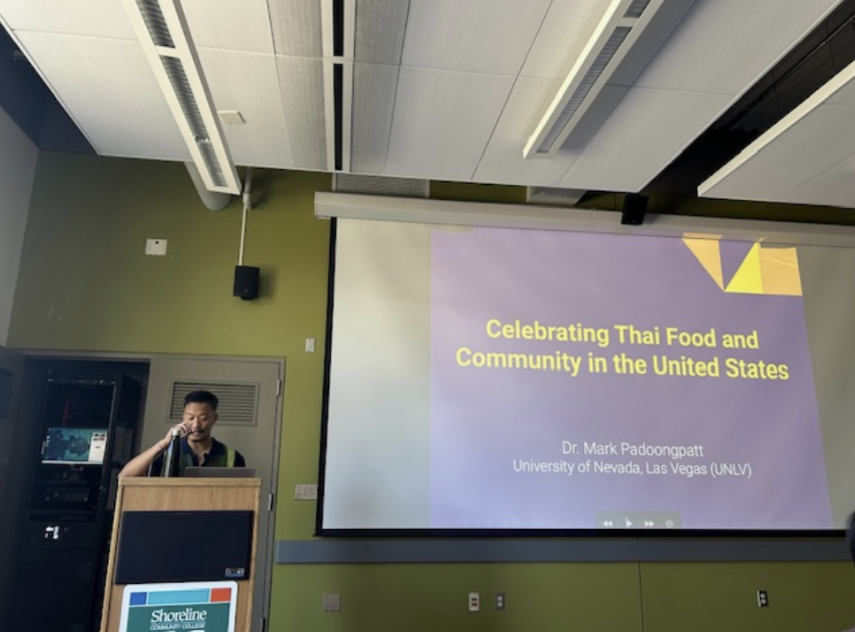The Life of Graves
Spending a Day in Evergreen Washelli Cemetery
The entrance sign to Evergreen Washelli Cemetery
May 27, 2022
Despite being the largest in Seattle, the nearby cemetery can be easy to miss.
A seven-minute drive from SCC, the Evergreen Washelli Cemetery fosters historical insight, moments of reflection and a peaceful place to walk.
David Denny, one of Seattle’s founders, opened Oak Lake Cemetery in 1884. The name was later changed to Evergreen Washelli Cemetery in 1962.
Today, the cemetery rests as a green space alongside the urban landscape of Aurora Avenue. Despite being next to a busy road, the area always feels peaceful.
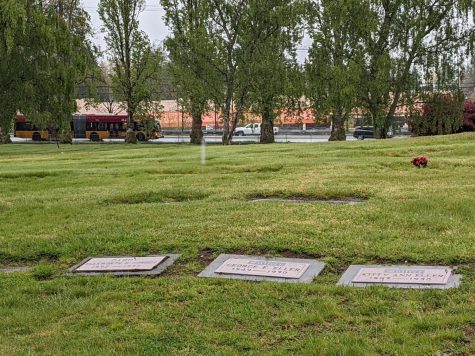
Setting foot on the grounds, an immediate ambiance reveals itself. It is a place to reflect.
Even on an exceptionally rainy day, people in heavy raincoats visit graves. They’re leaving white tulips, colorful pinwheels or sitting in solace.
Everyday life presesents itself here as well. A man and his dog jog by, doing a loop on paved paths. Most of the people out and about at the cemetery are groundskeepers who are surveying work areas, preparing plots and trimming the grass.
The road from one end of the cemetery to the other curve and turn in unexpected ways, mirroring life. At times the path is clear, and at other times the road comes suddenly.
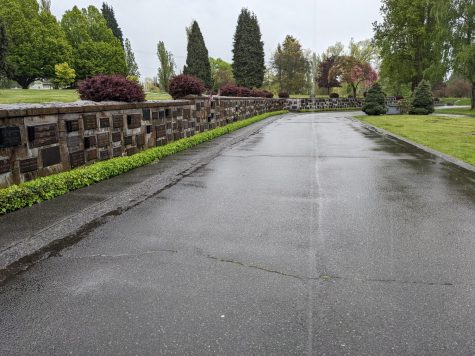
The graves of those who have passed away in the last few years stand out. The headstones are newer, glimmering with shine and color. The soil is still settling in, finding its foundation. You’ll find small trinkets accompanied by bouquets and sometimes you come across a recent grave enveloped in fresh flowers.
Older sections of the cemetery show natural signs of aging. Details of the lettering on headstones wear away and blur. Exposed metal fades from bronze to a teal-green color. Fallen leaves quietly drape over the oldest graves.
Some plots have space for more than one person. There are gravestones with two names, side by side. More often than not, a blank space waits next to a marked grave. These group areas include family plots, communities and dedications to groups of people. The group graves have a shared uniformity, a shared bond.
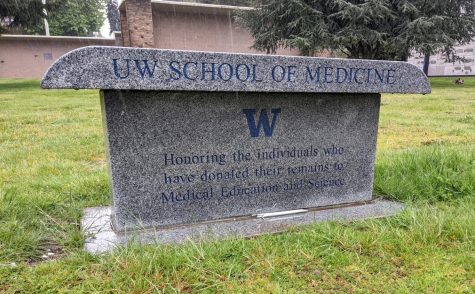
The veteran’s memorial section is distinct from the other areas of the cemetery. The uniformity and density of the fallen soldier’s gravestones is striking. Grave markers are spread all across a rolling hill and in an instant, the scale and impact of the conflict is clear. The dates on the gravestones show how temporary life can be.
Across from the veteran’s memorial, a structure stands on a small hill. Roman columns hold up a roof with flat stone sides. Everything about it feels grand and imposing. In a large dignified typeface, the name of the tomb reads Thomas Burke. In life, Thomas Burke, was called Chief Justice Burke of the Washington State Supreme Court. He was influential in the development of the railways in Seattle and is the same Burke that the Burke-Gilman Trail is named after.
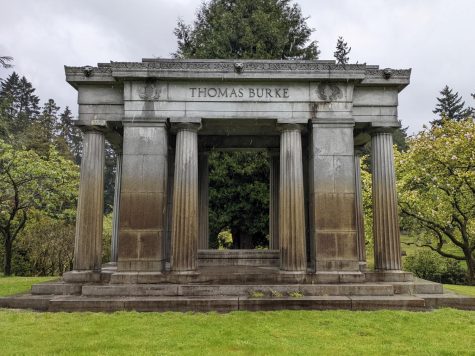
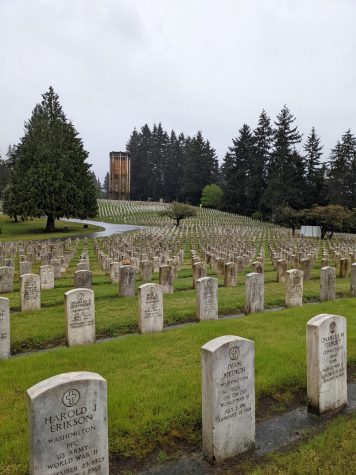
Moments of solitude, reflection and local history await those who choose to visit the cemetery neighboring SCC.
Information on Evergreen Washelli cemetery can be found here, and the cemetery is located at 11111 Aurora Ave N, Seattle, WA 98133.


